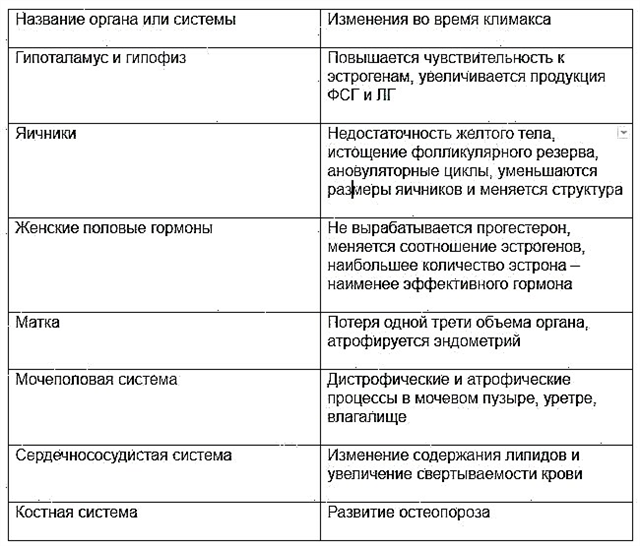Inflammation in the upper respiratory tract, particularly in the vocal folds and larynx, is called laryngitis. Both infectious and non-infectious factors can become provocateurs of the disease. Due to the imperfection of the immune system and defense mechanisms, infectious inflammation of the larynx most often occurs in young children under 5-6 years old. What are the main symptoms of laryngitis in children?
 Hoarseness, shortness of breath, paroxysmal cough and low temperature are characteristic manifestations of ENT disease.
Hoarseness, shortness of breath, paroxysmal cough and low temperature are characteristic manifestations of ENT disease.
Laryngitis of an infectious origin is often accompanied by severe swelling of the mucous membrane in the lining space, therefore, children often develop so-called stenosing laryngitis or false croup.
The diagnosis of the disease is carried out by an otolaryngologist, who makes a diagnosis based on the results of laryngoscopy and microbiological examination of a throat swab.
Features of laryngitis in children
With the development of the disease, the laryngeal mucosa, the upper trachea and the vocal folds (ligaments) are involved in inflammatory reactions. According to statistics, children of preschool age are more susceptible to the incidence. This is largely due to the relatively low immune status of the body and, accordingly, the frequent development of respiratory diseases. Laryngitis is detected in about 30% of young children with characteristic manifestations of acute respiratory infections.
What are the reasons for the development of laryngitis in a child? The high incidence is due to the anatomical features of the structure of the respiratory tract, as well as psychoemotional and allergic factors. In children, the larynx is not arranged like in adults. Before puberty, i.e. up to 11-12 years old, it has the shape of a funnel, narrowed downwards. If, due to inflammation, the thickness of the laryngeal mucosa increases by at least 1 mm, the child develops symptoms of respiratory failure.
Very often, the disease occurs as a complication of colds and infectious diseases - measles, scarlet fever, tonsillitis, adenoiditis, rhinosinusitis, pharyngitis, flu, etc. According to the results of pediatric statistics, laryngitis in children is viral in 86% of cases. In other words, even an elementary cold, accompanied by a runny nose, can provoke inflammation of the larynx and lower respiratory tract in a child.
Manifestations of the disease in infants
By what signs can laryngitis be diagnosed in children? Symptoms of the disease in infants are mild. Babies are not able to complain of a sore throat, shortness of breath and malaise. Therefore, parents should be more attentive to any atypical manifestations in the child's behavior.
It is possible to suspect the development of the disease in newborns and children under 1 year of age by the following manifestations:
- tearfulness;
- refusal to eat;
- blanching of the skin;
- a choked cry;
- poor sleep;
- nasal congestion;
- frequent coughing;
- noisy breathing (stridor).
If the baby's well-being worsens, the throat should be examined for inflammation. Redness and swelling of the posterior pharyngeal wall in most cases indicates the infectious nature of the inflammation. Having identified at least a few pathological symptoms in a child, you need to seek help from a pediatrician.
In acute inflammation of the larynx, the patency of the airways may decrease by 50-60% during the day.
It is important to understand that with an infectious lesion of the respiratory system in young children, allergic reactions to the waste products of pathogenic agents often occur. Therefore, the mucous membrane in the places of localization of viruses or bacteria quickly swells, which increases the risks of developing stenosing phenomena.
Signs of laryngitis
Hoarseness, fever and barking cough are the main signs of laryngitis in children. Many parents are in no hurry to show their child to a doctor just because in the early stages of the development of the disease, the symptoms are very similar to the manifestations of the common cold. Adults should be alerted by a painful dry cough, which can intensify at night.
 In the case of the development of a banal cold, the timbre of the voice never changes, since the inflammation is localized at the level of the nasopharynx, and not the vocal cords. If the baby has a hoarse voice and signs of respiratory failure appear, in 95% of cases this indicates a lesion of the larynx and voice-forming apparatus. It is impossible to determine the presence of inflammation in the larynx without special equipment, therefore, if you suspect the development of laryngitis, it is better to immediately seek help from an ENT doctor.
In the case of the development of a banal cold, the timbre of the voice never changes, since the inflammation is localized at the level of the nasopharynx, and not the vocal cords. If the baby has a hoarse voice and signs of respiratory failure appear, in 95% of cases this indicates a lesion of the larynx and voice-forming apparatus. It is impossible to determine the presence of inflammation in the larynx without special equipment, therefore, if you suspect the development of laryngitis, it is better to immediately seek help from an ENT doctor.
General clinical picture
The symptoms of the disease are most pronounced on the 2nd day after the defeat of the laryngeal mucosa. A small patient may complain of body aches, weakness, lack of appetite, headaches and drowsiness. Signs of intoxication of the body indicate the infectious nature of the inflammation of the respiratory system.
Due to the rapid progression of the disease, infection often affects the upper and lower trachea, as a result of which laryngotracheitis develops in children.
Typical symptoms of the development of acute inflammation in the airways include:
- hoarseness - extensive swelling of the laryngeal mucosa entails non-closure of the vocal folds, as a result of which vocal disturbances occur;
- cough - severe swelling of the respiratory tract leads to irritation of the cough receptors in the mucous membranes, so patients with laryngitis have a paroxysmal dry cough;
- subfebrile condition - infectious inflammation of soft tissues stimulates an increase in temperature, due to which the body's resistance to pathogenic microbes and viruses is somewhat increased;
- burning sensation in the throat - inflammation of the mucous membrane leads to tissue destruction and, as a result, irritation of pain receptors;
- shortness of breath - swelling of the vocal folds leads to a narrowing of the glottis, which prevents the flow of the required amount of air into the lungs.
Chronic hypoxia (oxygen deficiency) leads to disruption of gas exchange in tissues, so the skin and lips may acquire a bluish tint. The lack of oxygen in the body negatively affects the well-being of the child, so he becomes lethargic and lethargic.
Varieties of laryngitis
Depending on the characteristics of the course of the disease, laryngitis can be acute or chronic. In acute inflammation of the ENT organs, the symptoms are quite pronounced. A few hours after the defeat of the larynx, patients begin to complain of a feeling of coma and rawness in the larynx, malaise and fever. With sluggish, i.e. chronic inflammation of the respiratory tract, the disease is almost asymptomatic. In rare cases, patients have an aggravated cough in the evening or in the morning immediately after sleep.
In young children, in most cases, acute inflammation develops. Depending on the provoking factors and the characteristics of the course of pathological processes, the following forms of ENT disease are distinguished:
| Laryngitis form | Definition | Symptoms |
|---|---|---|
| catarrhal | slight redness of the larynx mucosa resulting from damage to the ENT organs by pathogenic viruses | Barking cough; hoarseness of voice; perspiration in the larynx; low temperature (subfebrile condition) |
| tuberculous | a secondary disease that occurs against the background of tuberculous lesions of the lungs; accompanied by the destruction of cartilage tissue in the epiglottis and trachea | severe sore throat; coughing up blood; difficulty swallowing; sore throat on palpation |
| hypertrophic | a chronic form of the disease in which the walls of the larynx thicken strongly | coarsening of the voice; inspiratory dyspnea; blue lips; spastic cough |
| atrophic | a chronic form of the disease, accompanied by thinning of the laryngeal mucosa and the formation of dry crusts on it | dryness of the laryngeal mucosa; hoarseness of voice; unproductive spastic cough; bloody impurities in sputum |
| functional | damage to the vocal cords due to overstrain during crying | sore throat; lack of temperature; hoarseness of the voice; painful swallowing |
Tuberculous and hypertrophic laryngitis are the most dangerous forms of the disease, which often lead to stenosis of the larynx.
Symptoms of stenosing laryngitis
Stenosing laryngitis (false croup) is the most dangerous respiratory disease that can cause suffocation. Due to the tendency to allergic reactions and the lack of specific immunity, the disease is most often found in babies under 2 years of age. In addition, in infants, the larynx is very narrow, therefore, even with a slight inflammation of the mucous membrane, the patency of the respiratory tract decreases by 50%.
As a rule, false croup develops on the third day after a viral lesion of the respiratory system. In this case, the child manifests a triad of typical symptoms of the disease:
- wheezing;
- paroxysmal cough;
- hoarseness of voice.
The severity of clinical manifestations depends on the degree of laryngeal stenosis. As a rule, the child becomes restless, complains of lack of air and shortness of breath. With a strong narrowing of the lumen of the larynx, breathing becomes shallow, and the skin becomes very pale. In the event of such symptoms, you need to call the ambulance team to your home.



